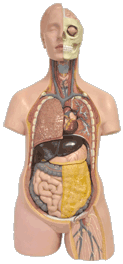At WiseGEEK, we're committed to delivering accurate, trustworthy information. Our expert-authored content is rigorously fact-checked and sourced from credible authorities. Discover how we uphold the highest standards in providing you with reliable knowledge.
What Are the Different Types of RNA?
All of the genetic information for an orgamism is contained on its deoxyribonucleic acid (DNA), located within its cells. It is the responsibility of the cell’s ribonucleic acid (RNA) to use this genetic information to synthesize all of the proteins necessary for the life of both the cell and the organism. RNA is one of three macromolecules required for all living organisms; the other two are DNA and proteins. To carry out the process of protein synthesis, there are three types of RNA: messenger RNA, ribosomal RNA and transfer RNA.
The genetic information contained within the DNA is comprised of numerous gene segments, called alleles. Each allele represents the blueprint for manufacturing a specific protein. These proteins are constructed out of about 20 amino acids, which can be thought of as the building blocks of proteins. The exact order of amino acids for a given protein is coded on the DNA via a series of nucleotides, grouped in sets of three. Each of these nucleotide triplets, called codons, corresponds to one type of amino acid.

Messenger RNA (mRNA) represents a copy of one of these DNA alleles. The mRNA contains all of the nucleotide triplets, or codons, that are required for the synthesis of a given protein, including the proper sequence. When the cell determines that the protein contained on the mRNA is needed, the mRNA is moved into the cell’s cytoplasm, where it links up with a ribosome. It is the mRNA’s nucleotide triplets that are “read” by scientists, not the DNA’s triplets.
Ribosomal RNA (rRNA) combines with proteins in the cell’s cytoplasm to form ribosomes. These ribsosomes attach to the mRNA and facilitate the synthesis of the new protein. The rRNA moves down the length of the mRNA strand, like a zipper, bonding the required amino acids together.
Transfer RNA (tRNA) is responsible for delivering the proper amino acids to the ribosomes. There are at least 20 different tRNAs — one for each amino acid. Each tRNA carries its assigned amino acid and a corresponding anticodon. This anticodon is a nucleotide triplet that is the opposite match of the mRNA’s codon for the given amino acid. The tRNA reads the mRNA and, if its anticodon matches the mRNA’s codon, it releases its amino acid to the rRNA for processing.
The cell’s RNA system is a two-stage process. First, the genetic information for one allele on the DNA is copied into a strand of mRNA by RNA polymerases enzymes, through a process called transcription. Second, the information on the mRNA is used to synthesize a protein through a process call translation.
The cell’s translation process consists of three activities that are conducted simultaneously. The mRNA serves as the protein blueprint, directing the assembly of the protein. The rRNA serves as the factory, providing support for the structure and linking together the amino acids. The tRNA serves as the delivery vehicle, delivering the right amino acids to the ribosome when it is needed. The tRNA determines when its amino acid is needed by reading the mRNA’s blueprint.
Many viruses, through a process known as the lytic cycle, use RNA to replicate themselves and destroy their host. They inject their harmful mRNA into a host cell’s nucleus. The cell then unknowingly uses this mRNA to synthesize more of the virus. Ultimately, these new virus particles break out of the cell and spread to other host cells, repeating the deadly cycle.
AS FEATURED ON:
AS FEATURED ON:










Discuss this Article
Post your comments